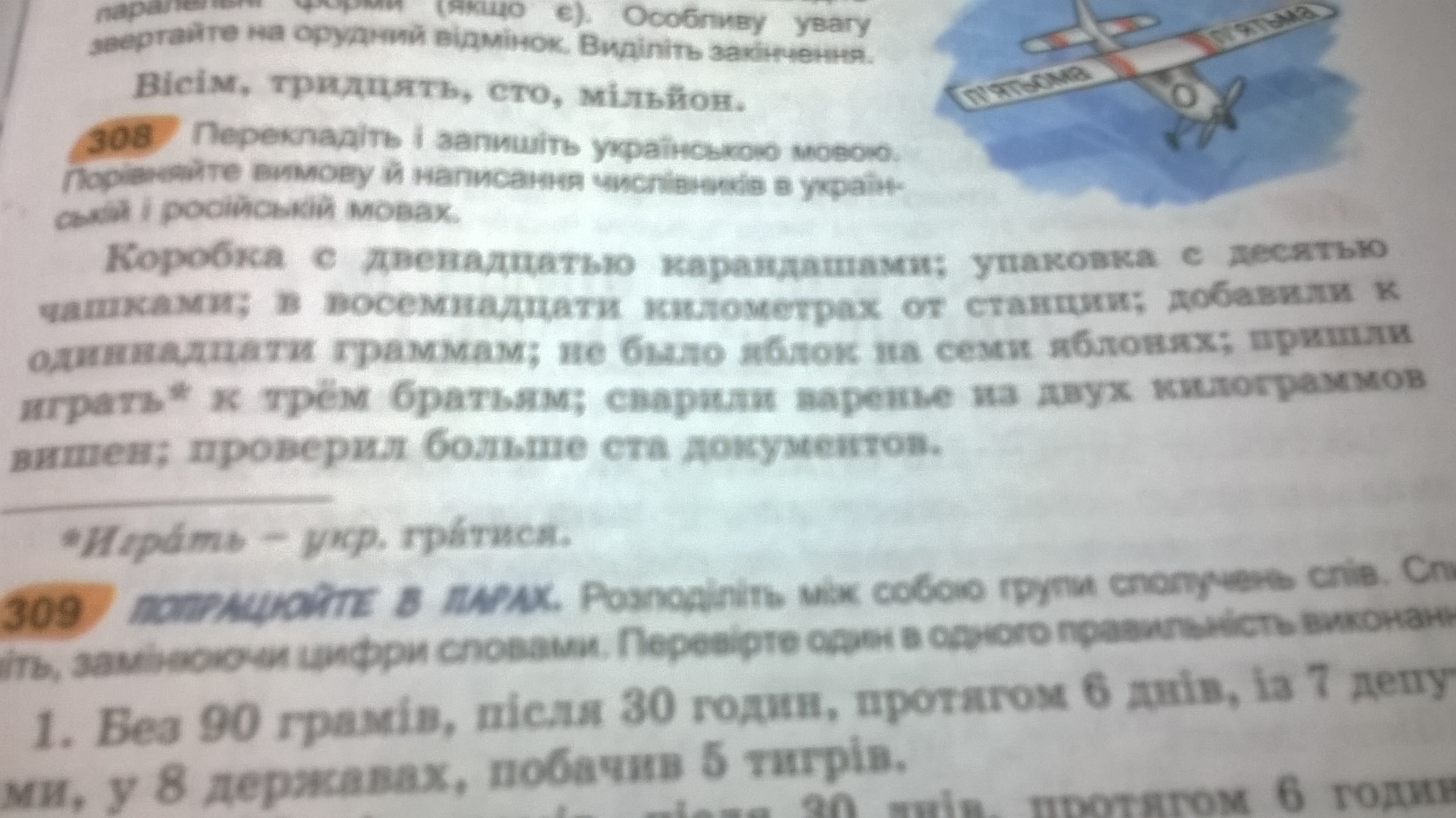Предмет: Українська мова,
автор: MaryIncognito
Помогите перевести на украинский язык без переводчика
Упражнение 308
Приложения:

Зая814:
плохое качество
Ответы
Автор ответа:
1
Коробка з дванадцятьма олівцями, упаковка з десятьма чашками, у вісімнадцяти кілометрах від станції, додали до одинадцяти грамів, не було яблук на сімох яблунях, прийшли гратися до трьох братів,зварили варення з двох кілограмів вишень, перевірив більше ста документів
Похожие вопросы
Предмет: Химия,
автор: pppp99552
Предмет: Алгебра,
автор: alex018860
Предмет: Физика,
автор: ksushonoka
Предмет: Английский язык,
автор: Vikatailor
Предмет: Геометрия,
автор: F1F4